Divisional Memorials on the Western Front
- Home
- World War I Articles
- Divisional Memorials on the Western Front
It all started with a conversation. Clive Harris, on one of the excellent battlefield tours run by Battle Honours was talking about Divisional Memorials, and speculated that the construction of these may have been funded by the sales of divisional histories, of which many were published in the 1920s. I thought this was an interesting point as I had looked at this in the past, without following it up.
Clive was correct, in that some British divisions had both a divisional history and a memorial. But studying this, the more complicated it became.
The starting point of this study is possibly to look at all those divisions that have memorials. This can be best illustrated by this interactive map which shows the EXACT location of all (known) divisional memorials (including some in the UK).[1] The map below, besides showing the location of the memorials also provides images of each of these memorials (including some video footage). The icons are colour coded to differentiate between BEF/AIF/CEF and NZEF memorials.
To see the LIST of memorials click the 'expand' icon in the top left of the image below.
To go to FULL SCREEN mode, click the icon in the top right of the image below.
Use the 'scroll' wheel on your mouse, or the plus and minus buttons to zoom in and out of the map.
Below: A google map of all BEF/AIF/CEF/NZEF Great War Divisional Memorials.
Any additions to this list would be happily received by the author.
Rightly or wrongly, outside the scope of this list are 'non permanent' fixtures such as the altar within the church at Bourlon (to the 40th Division) and the cross within St George's Chapel, Ypres (dedicated by the 23rd Division 'in memory of their comrades who fell').
A list of (known) divisional histories is shown at the end of this piece.
British Divisions with both a memorial and a Divisional History [2]
After 100 years it is going to be almost impossible to ‘follow the money’ here. Would these published books have produced sufficient profits to fund a memorial and was the timing of the publication prior to the construction of the division's memorial? The following is what I believe is a comprehensive list of British Divisions that could have had their memorial funded by a ‘divisional history’.
- Regular Divisions
Looking at the list of divisions, we see that the Guards Divisional History (two volumes, published in 1924) may well have paid for the division’s memorial in Ginchy, but what about the memorial at Horse Guards Parade in London? The London memorial, according to Wikipedia, cost ‘around £22,000’ and was unveiled in 1926. Surely the cost of this (£1.3 million today) rules out the chances of this memorial being funded by the book.
In Belgium there is the 7th Divisional memorial. Its history was published 1927, three years after the erection of the memorial. This means the memorial came before the book so must rule out the possibility of the memorial being built from the profits of the divisional history. There is a second memorial to the division on the banks of the Piave river in Italy, which - like the one in Belgium - was also built in 1924.
Back in the UK we have the 8th Division's memorial at Aldershot. This was unveiled in 1924, again two years before the division’s history was published in 1926. There is also a memorial at Hursley for this division.
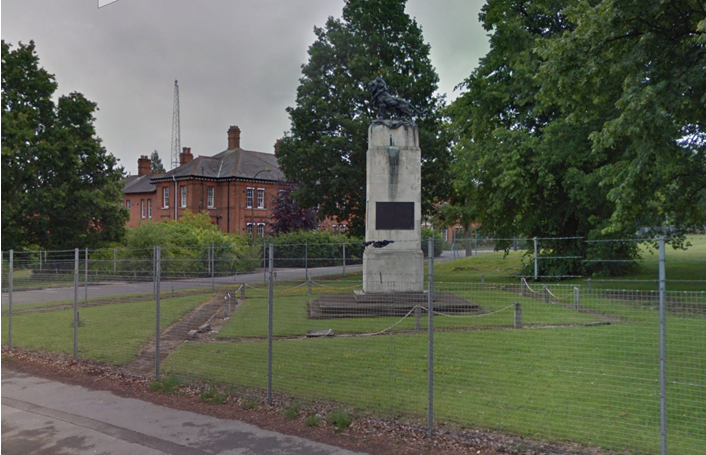
Above, the 8th Division Memorial behind a fence at Aldershot
And there is also the 29th – another regular division – which has two memorials, a very impressive one on the Fosse Way and a modest one in Newfoundland Park. The war memorial in the UK cost, according to Wikipedia £646, (£32,000 today) and was unveiled in 1921. Wikipedia goes on to state that this was ‘raised from public subscriptions, and £720 donated by John Montagu Douglas Scott, 7th Duke of Buccleuch’.
The memorial at Beaumont Hamel was unveiled in 1925; the same year as the divisional history was published.
This suggests that the UK memorial was privately funded (not obviously from sales of the divisional history) and the French memorial would surely not have been funded having been unveiled in the same year as the book was brought out.
- New Army Divisions
There are also a number of memorials to Kitchener divisions in France and Belgium, with some of these divisions also have published histories.
There are two memorials for the 12th (Eastern). The 12th Divisional History, published in 1923, describes the unveiling of the memorials at Wancourt (Feuchy) and Epéhy two years earlier. So again, there is no possibility of the book funding the memorials.
The 15th (Scottish) Division’s history was published in 1926 (the 15th Division arguably having a second history - see the appendix to the article). Rose Coombs states the memorial was moved to the present location (in a CWGC cemetery) ‘some years ago’ but without giving details of when the memorial was originally constructed. It seems that this monument may have been initiated and funded locally. According to the CWGC:
…within the cemetery is the 15th Division Memorial, put up by the Engineers of the French 17th Division in August, 1918.
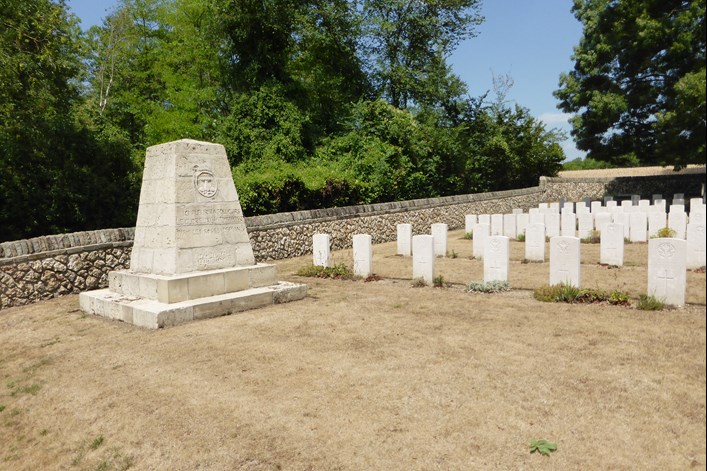
Above: the 15th (Scottish) Division memorial at Buzancy
The 18th (Eastern) has three memorials, the memorial at Thiepval was unveiled in 1925, three years after the publication of the divisional history, but could the book have supported the construction of three (identical) memorials?
The 19th (Western) also has three memorials, but its history was published in 1932. It has not been possible to date these three memorials, which are identical. It is very unlikely that these memorials would have been erected after the publication of this division’s history.
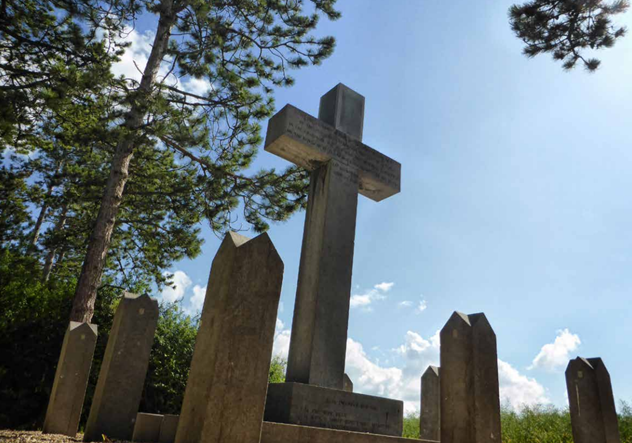
Above: One of the 19th (Western) Division's memorials. This is the one on the top of the Montage de Bligny, which is remote and away from the usual 'battlefield hotspots' that are visited.
The 20th (Light) has two memorials (and also has - arguably - two divisional histories, one in 1921 and a volume dedicated the division’s artillery that came out as early as 1919). The Guillemont Memorial was unveiled in 1922 so it’s not inconceivable that it was financed by the ‘main’ history, but with only a year between publication and the unveiling this seems unlikely to have been paid for out of the book’s proceeds.
The 25th Division also had a memorial and an early (1920) divisional history. There is an architect’s drawing of the memorial which is dated 1919...
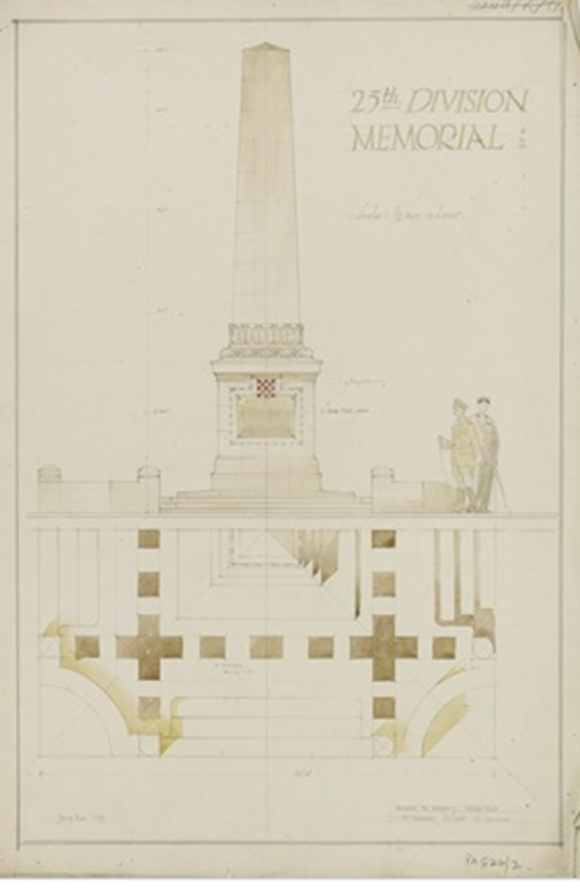
...so this can’t be dismissed as being unrelated to the book.
The 34th also has two memorials plus one to the division’s artillery and engineers. Its divisional history came out in 1921. The memorial at La Boisselle was unveiled in 1923. The timing here suggests it is possible that the memorial could have been linked to the book’s publication.
There is also of course the most famous of all – the 36th (Ulster) Division which has the Ulster Tower as its memorial. The divisional history came out in 1922, significantly a year after the tower was officially opened, so again this suggests the timing is wrong for the memorial to be linked to the divisional history. Plus, the cost of such a construction would surely be beyond the profits generated by the book.
The 37th is the last of the ‘New Army’ memorials that may have been funded by the publication of a history, but the title of this suggest casts doubt on the format of this publication (dated 1919). The memorial (below) was inaugurated in 1921.
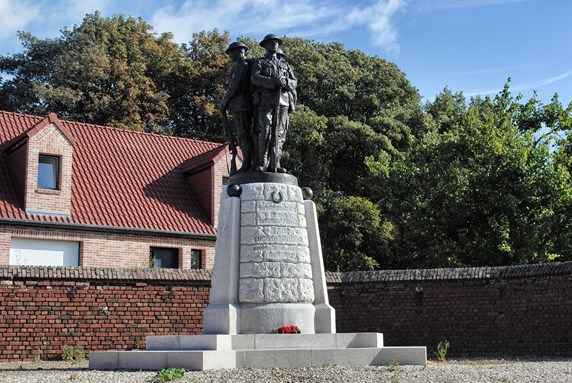
As everyone will be aware, there is the famous ‘dragon’ memorial which stands at Mametz, to the 38th (Welsh) Division. However, this is a modern memorial and was built decades after the division’s history was published in 1920.
To this list could be added the 10th (Irish) Division which had a short (partial) history written covering its time in Gallipoli (published, incredibly in 1918). If this was linked to the Divisional memorial, one would expect the memorial to be located on the peninsula, but it’s not. It is in a remote spot in Northern Macedonia.
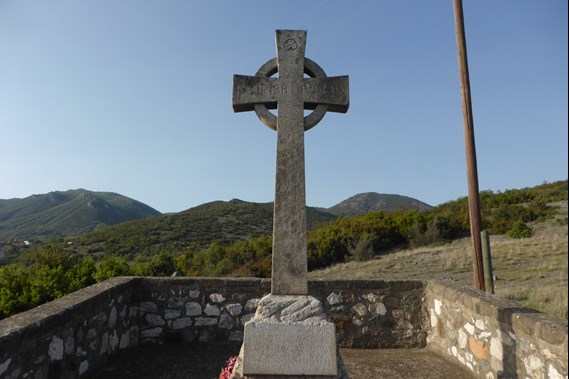
Above: The rarely visited 10th (Irish) Divisional Memorial in Northern Macedonia
The Royal Naval Division is also a candidate here – although not a ‘Kitchener’ division (more of a ‘Churchill’ division) it has both a memorial and a divisional history (published in 1923). The memorial at Gavrelle is modern, so can be discounted, the memorial at Beaucourt (dated 1921) was apparently funded by Lord Rothermere (in memory of his son, Lieutenant the Honourable Vere Harmsworth).
The division also has a memorial which is located in Horse Guards Parade, London which was unveiled in 1925: Wikipedia has the following:
The initial cost of the memorial was met entirely by private subscriptions, largely from former members of the division or the families of those killed while serving in it. By far the largest contributor was Lord Rothermere—owner of the Daily Mail newspaper—whose second son, Vere Harmsworth, was killed in action with the division at the Battle of the Ancre in 1916. HM Treasury authorised the Office of Works to see to the ongoing maintenance of the fountain, to which the RND Association contributed through a trust fund established with surplus donations, chaired by Arthur Asquith and … The fund also covered the construction of a memorial to the RND near Beaucourt-sur-l'Ancre in France, which takes the form of a truncated stone obelisk
- Territorial Force Divisions
The Territorial Force Divisions in the First World War have numerous divisional histories, and many of these divisions have memorials. The TF divisions with both memorials and histories are as follows:
42nd (East Lancashire). The Memorial (image below) was unveiled in 1922; the divisional history published 1920.
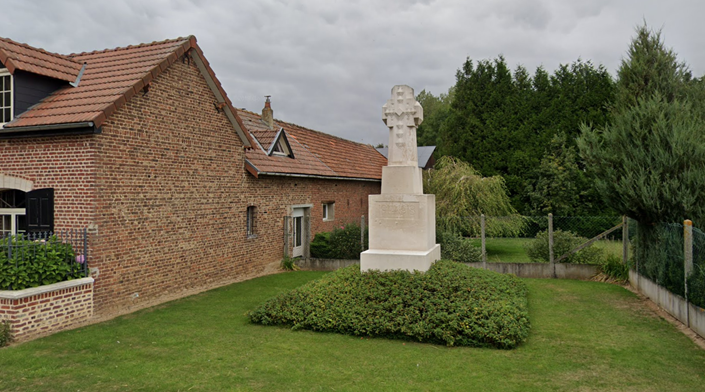
46th (North Midland). The Divisional history was published 1919 (this is a partial history). Ignoring the ‘modern’ memorial and the plaque inside Gommecourt Wood New Cemetery, there are two memorials to the division. It seems that the ‘partial’ history would have been a modest tome which would have not funded the construction of a full memorial structure.
47th (London). Two memorials are geographically close. The one on the edge of High Wood was unveiled in 1923, and the structure in Martinpuich was unveiled in 1925. Either could conceivably have been funded by the Divisional history which was published 1922.
49th (West Riding). The monument was inaugurated on 22nd June 1924 by Major General Sir Edward Perceval. The Divisional history was published 1920, but see below (62nd Division).
50th (Northumberland). The Divisional history was published 1939 (which is very late) It was the last pre-Second World War divisional history to be published and clearly was written well after the impressive memorial was constructed at Wieltje (image below).
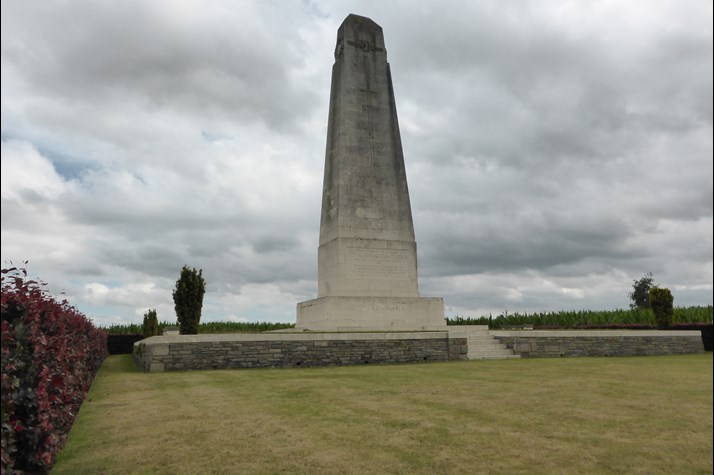
51st (Highland). The Divisional Memorial was unveiled on 28 September 1924. The divisional history was published in 1921 so this volume cannot be ruled out as the source of finance.
53rd (Welsh). The Divisional history was published 1927. The plaque in the CWGC cemetery at Ramleh is modest and probably only just qualifies as a ‘divisional memorial’.
55th (West Lancashire). The memorial was unveiled on 15 May 1921. The Divisional history was published 1919
56th (London). The Divisional history was published 1921, and there is a memorial to the division in Arras (image below), which this takes the shape of a modest plaque.
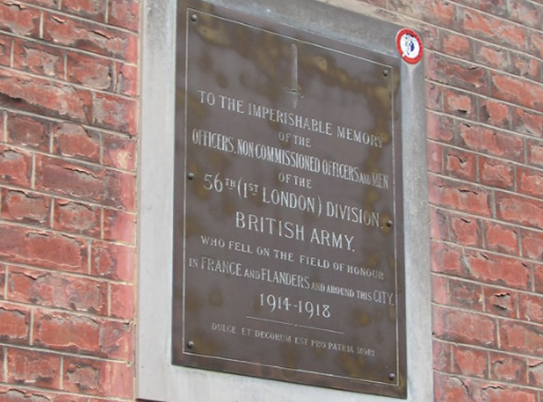
60th (London). The Divisional history was published in 1927. The memorial stands in Jerusalem. It was built in 1920, a full seven years prior to the publication of the divisional history.
62nd (West Riding). This memorial (see image below) was unveiled in 1922, some years before the two volume history came out (1924/25). However the construction of the two West Riding division memorials, being identical, suggests these were not linked to the (separately authored and published) divisional histories. The 49th Division memorial was unveiled in 1924.
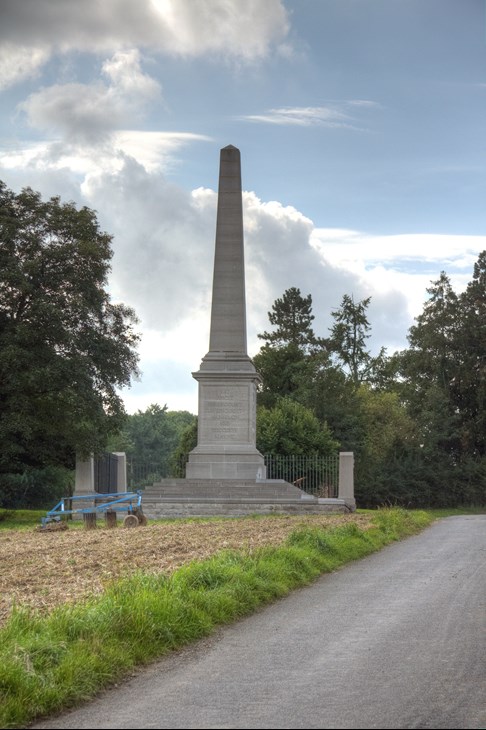
From the above, we can see there is evidence that Clive’s idea may be correct in some scenarios but in others there is substantial doubt.
There are also a number of other issues that are worth reviewing.
First, there are a number of BEF divisions that have a memorial but no divisional history. These can all be found and viewed on the above interactive map.
These divisions are as follow: 1st, 14th, 16th (there is a modern divisional history but clearly this is nothing to do with the memorial), 21st (not actually a divisional memorial, but a brigade memorial – this is included in the list), 22nd, 24th (the church spire / bells at Le Verguier just about 'count' as a divisional memorial), 41st, 58th, 66th.
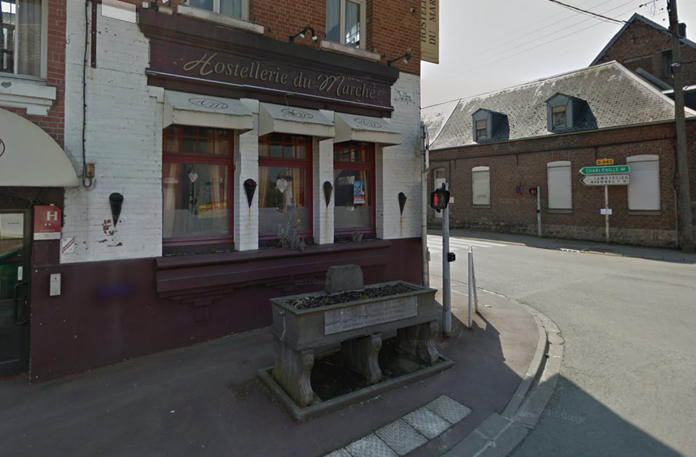
Above: The 66th Division's Memorial in Le Cateau was originally a horse-trough. It has now been re-purposed to hold one of the town's flower beds.
But what about the opposite scenario, namely those divisions which had a history written but without a memorial to the achievements?
These divisions are as follows: 2nd, 5th, 6th, 9th, 15th, 17th, 23rd, 30th (the ‘Pals’ memorial in Mountauban is modern and not a 'true' divisional memorial, in addition the divisional history A Brief History of the 30th Division is remarkable as being only 64 pages long), 33rd, 35th, 40th, 52nd, 59th, 74th (ignoring the modern ‘combined’ memorial with the 61st at St Floris).
Conclusion
It is possible that there may have been a contribution from the sale proceeds of some divisional history volumes to the construction costs of divisional memorials, but the pattern of memorials with no history (nine divisions by one method of counting) and those with a history but no memorial (14 divisions) makes the issue more complex.
There are conceivably four regular, eleven new army and eleven Territorial Force divisions with both a memorial and a divisional history. However, evidence suggests that over half of these divisions’ memorials could not have been in any way funded by the profits from books. as stated at the outset of the others, the timing of the publication suggests that they could have been funded but it seems improbable in some of these cases that the book profits would have been anything like enough to finance construction costs.
More work needs to be done to be certain, but it seems unlikely that any (or many) of these memorials were built ‘on the back of’ the divisional histories.
Article by David Tattersfield, Vice-Chairman, The Western Front Association
[1] This list excludes UK church memorials which tend to be plaques or windows, apart from the one in Liverpool cathedral, which takes the form of a statue.
[2] The article looks only at BEF divisions, but Canadian, Australian and New Zealand Divisional Memorials are shown on the map
Appendix - British Divisional Histories of the Great War
Sub Units
Narrative of the 5th Divisional Artillery by Brigadier-General A.H. Hussey (Woolwich: Royal Artillery Institution, 1919)
History of the 20th Divisional Artillery 1914-1918 by Captain E.G. Earle (Woolwich: Royal Artillery Institution, 1919)
29th Divisional Artillery, War Record & Honours Book 1915-1918 by Lieutenant-Colonel R.M. Johnson (Woolwich: Royal Artillery Institution, 1921)
Artillery & Trench Mortar Memories. 32nd Division. Diaries by A.B. Scott, R.E. Grice-Hutchinson, L. Heathcoat-Amory. Memories by S. Reed, J.E. Prince, S.A. Cooper, V.H. Laar, W.E. English, T. Slane. Epilogue by S. Reed edited by R. Whinyates (London, [1933])
History of the 33rd Division Artillery in the War 1914-1918 by J.V.M. Filgate (London: Vacher, 1921)
A Short History of the 39th (Deptford) Divisional Artillery, 1915-1918 by Lieutenant-Colonel H.W. Wichkin (1923)
War Services of the 62nd Divisional Artillery by Colonel A.T. Anderson (Cambridge: Heffer, 1920)
List only
15th (Scottish) Division List of Officers (15th (Scottish) Division Trust, nd)
Brief Periods
The Tenth (Irish) Division at Gallipoli by Major Bryan Cooper (1918)
The 38th (Welsh) Division in the last five weeks of the Great War by Major-General H.D. Du Pree (Reprinted from the Royal Artillery Journal, 1933)
Breaking the Hindenburg Line: The Story of the 46th Division by R.E. Priestley (London: Fisher & Unwin, 1919)
Recent
Iron Division: The History of the Third Division by Robin McNish (London: Ian Allan, 1978)
Ireland’s Unknown Soldiers. The 16th (Irish) Division in the Great War, 1914-1918 by Terence Denman (Dublin: Irish Academic Press, 1992)
Duplicated
A Short History of the 19th (Western) Division by Major-General G.D. Jeffreys
The Fifty-First in France by Captain Robert B. Ross (London: Hodder & Stoughton, 1918)
Regular
History of the Guards Division in the Great War by C. Headlam (2v. London: John Murray, 1924)
History of the Second Division, 1914-1918 by Everard Wyrall (2v. London: Nelson, 1921)
The Fifth Division in the Great War by Brigadier-General A.H. Hussey and Major D.S. Inman (London: Nisbet, 1921)
A Short History of the 6th Division August 1914-March 1919 by Major-General T.O. Marden (London: Rees, 1920)
The Seventh Division, 1914-1918 by C.T. Atkinson (London: John Murray, 1927)
The Eighth Division in War by J.H. Boraston and C.E.O. Bax (London: Medici Society, 1926)
The Story of the 29th Division by Captain Stair Gillon (London: T. Nelson, 1925)
Kitchener (& Churchill)
The History of the 9th (Scottish) Division, 1914-1919 by J. Ewing (London: John Murray, 1921)
History of the 12th (Eastern) Division in the Great War by Major-General Sir A.B. Scott and P.M. Brumwell (London: Nisbet, 1923)
The Fifteenth (Scottish) Division, 1914-1919 by Lieutenant-Colonel J. Stewart and John Buchan (London: Blackwood, 1926)
History of the 17th (Northern) Division by A.Hilliard Atteridge (Glasgow: Maclehose, 1929)
The 18th Division in the Great War by G.H.F. Nicholls (Quex) (London: Blackwood, 1922)
History of the 19th Division, 1914-1918 by Everard Wyrall (London: Arnold, 1932)
History of the Twentieth (Light) Division by V.E. Inglefield (London: Nisbet, 1921)
The 23rd Division, 1914-1919 by Lieutenant-Colonel H.R. Sandilands (London: Blackwood, 1925)
The 25th Division in France and Flanders by M. Kincaid-Smith (London: Harrison, 1920)
A Brief History of the 30th Division by R. Flenley (War Narratives Publishing, 1919)
The Thirty-Third Division in France and Flanders, 1915-1919 by G.S. Hutchison (London: Waterloo, 1921)
The Thirty-Fourth Division, 1915-1919 by Lieutenant-Colonel J. Shakespear (London: Witherby, 1921)
The History of the 35th Division in the Great War by H.M. Davson (London: Sifton Praed, 1927)
History of the Thirty-Sixth (Ulster) Division by C. Falls (London: McCaw, Stevenson & Orr, 1922)
The Golden Horseshoe. The Journal of the 37th Division (London: Cassell, 1919)
A History of the 38th Division by Lieutenant-Colonel J.E. Munby (London: Rees, 1920)
History of the 40th Division by Lieutenant-Colonel F.E. Whitton (Aldershot: Gale & Polden, 1926)
The Royal Naval Division by Douglas Jerrold (London: Hutchinson, 1923
Territorial
The 42nd East Lancashire Division, 1914-1918 by Frederick P. Gibbon (London: Country Life, 1920)
The 47th (London) Division, 1914-1919 by A.H. Maude (London: Stapleton, 1922)
The West Riding Territorials in the Great War by Laurie Magnus (London: Kegan Paul, Trench Trubner, 1920)
The History of the Fiftieth Division, 1914-1919 by E. Wyrall (London: Percy Lund Humphries, 1939)
History of the 51st (Highland) Division, 1914-1918 by F.W. Bewsher (Edinburgh: Blackwood, 1921)
The Fifty-Second (Lowland) Division, 1914-1918 by Lieutenant-Colonel R.R. Thompson (Glasgow, 1923)
History of the 53rd (Welsh) Division, 1914-1918 by C.H. Dudley Ward (Cardiff: Western Mail, 1927)
The Story of the 55th (West Lancashire) Division by the Rev. J.O. Coop (Liverpool: Daily Post Printers, 1919)
The 56th Division - 1st London Territorial Division by C.H. Dudley Ward (London: John Murray, 1921)
The 59th Division 1915-1918 by Lieutenant-Colonel E.U. Bradbridge (Chesterfield: Wilfred Edmunds, 1928)
History of the 60th Division - 2/2nd London Division by Colonel P.H. Dalbiac (London: Allen & Unwin, 1927)
The History of the 62nd (West Riding) Division, 1914-1919 by Everard Wyrall (2v. London: Lane, 1924-25)
The 74th (Yeomanry) Division in Syria and France by Major C.H. Dudley Ward (London: John Murray, 1922)
If any reader is aware of other Divisional Memorials not detailed on the map shown above, please get in touch.





